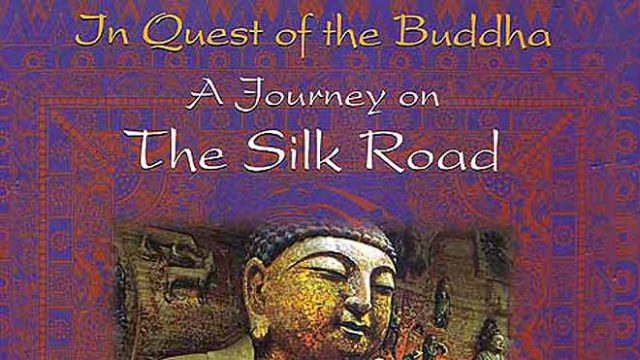Two millennia ago, the Silk Road was a little like the Internet, the difference being that data travelled slowly, on camel back. But it nevertheless travelled: Buddhism was disseminated, its philosophical ideas reaching as far as China and perhaps, even the Mediterranean countries. The Silk Road though, to further the comparison, was primarily a dot-com — its main reason for being was enabling the export of Chinese silk and Indian spices. But as we all know, one can’t have international business without cultural contamination. While reading the lavishly illustrated In Quest of the Buddha: A Journey on The Silk Road (Rupa; Rs 1,000), it became clear that the Road served as the practical means for prehistoric, pre-Internet intellectual globalisation.
It’s refreshing to have an Indian perspective, not because there’s anything wrong with the travelogues by Western writers revisiting the Silk Road, but since Sunita Dwivedi is able to spot tell-tale cultural signs that can be traced back to ancient Indian merchants who travelled the world.
One tends to think of the Silk Road as a trade route between Europe and China, but it also served for trade between much closer neighbours — one of its major limbs was the link between India and China: there was a huge market in Sichuan for Kashmiri saffron, south Indian soap, tobacco from Sikkim and Himalayan herbs. It’s quite astonishing that already 1,500 years ago, Indian doctors practised abroad — Chinese emperors, who frequently wanted to go on ruling forever, thought that Indian medicines would make them immortal.
Visiting ancient Buddhist sites in a distant desert, Dwivedi spots sculptures of bodhisattvas clad in dhotis, she finds an illustrated plate of a sutra in Sanskrit, and notes that the cultural affinity exists even today — Uighur shops in the oasis towns sell cassettes of Kishore Kumar and Asha Bhonsle and dubbed CDs of Indian movies.
Also, importantly, Dwivedi documents shameful instances of foreign ‘explorers’ — American or European — purloining statues from ancient sites and trying to use chemicals to peel paintings off cave walls in order to supply museums in the West.
A minor drawback is that the book lacks detailed maps, so a reader doesn’t have a clear idea of where exactly all these fabulous sites are located — one must have an atlas by the side.




